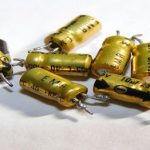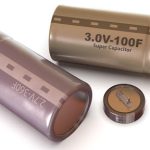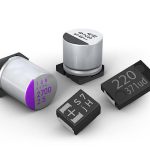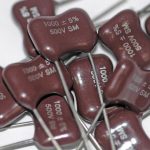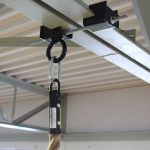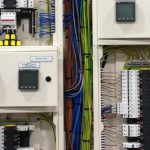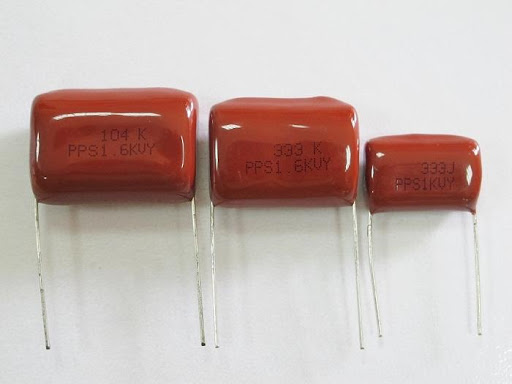
Polypropylene film capacitors are commonly available as leaded components. The polypropylene dielectric is indicated by the initials PP, and the capacitor itself is also known by the same initials. Polypropylene is a manufacturing material and has many benefits due to which they are utilized in a variety of applications. The applications include textile, stationery, packaging and labeling, ropes, reusable containers, and many other products. It can potentially used to manufacture ropes and is famous outside the industry. Polypropylene used in some high-quality loudspeakers, where its properties give them outstanding performance as required.
Polypropylene is known as an addition polymer that is constructed from monomer propylene. They rugged and uniquely resistant to many chemical liquids, acids, and bases, beneficial for many applications.
Construction of Polypropylene Capacitors
The polypropylene of PP capacitor is a type of what is named a film capacitor. These capacitors utilize a thin plastic film as the dielectric – for this situation, polypropylene. The film made exceptionally thin and to the expected thickness utilizing a refined drawing process.
The polypropylene film may then be metalized, and in this manner, the plates are shaped across the dielectric. On the other hand, the film might be left untreated, and separate leaves of a conductor are put between layers of the film to frame the cathodes. One way or the other different layers of the film are expected to give the necessary capacitance, and the plates are associated with the outside leads.
At long last, the assembly is mounted into a case that shields it from harm and other natural variables.
Properties of Polypropylene Capacitors
Polypropylene film capacitors are available for various sources and can be used for many applications. However, there are still some limitations that must be considered. Some of the essential factors regarding PP capacitors that must be considered include the following:
Tolerance:
These capacitors are often utilized in applications where high tolerance levels are needed. There are capacitors available that have a 1% tolerance level.
Stability:
PP capacitors bring very little change in capacitance over time when applied voltage. This makes them ideal for applications that need a stable level of capacitance. The temperature coefficient is known to be negative, low, and virtually linear.
ESR:
These capacitors have low ESR and equivalent series resistance, and also, the majority of types have low inductance levels.
Leaded Components:
Polypropylene capacitors are only available in leaded versions and not in surface mount versions. Different types of ceramic capacitors are more commonly utilized.
Capacitance Range:
PP capacitors are available in a variety of capacitance values. Generally, these capacitors are available in values ranging from 100pF up to 10 mph and more.
Voltage Range:
Such Capacitors are known to function with high voltages and withstand them. Some small-sized capacitors also have operating voltages that range from 630V or even 1kV, and 100V versions are standard.
Temperature:
PP capacitors can function at temperatures up to 100 degrees in centigrade and often just over with de-rating. However, it is still crucial to consider the manufacturer’s specifications before designing them into a particular component.
Application of Polypropylene Capacitors
PP capacitors are utilized in many sectors of electronics. Although they are only available in leaded versions, they are still used for various applications. Some of these applications include:
- These capacitors utilized in high power and high AC voltage circuit requirements.
- PP capacitors are popular for circuits with high peak current levels.
- They used in high-frequency resonance circuits, precision timing circuits, sample and hold circuits, and high-frequency pulse discharge circuits.
- Polypropylene film capacitors preferred in lighting ballast systems.
- They also utilized in switching mode power supplies and perform the tasks efficiently.
- PP capacitors used in audio applications where consumers believe they offer better performance and, hence, better sound quality. They highly preferred in audio equipment.
- The high resistance of these circuits allows for low self-discharge, which makes them ideal for energy storage circuits.
Polypropylene is utilized for all those sectors where a leaded capacitor can are used. This reduces their use to fewer specialist applications. Despite these factors, they are still widely available for many applications.
Conclusion
The above sections briefly explain essential and fundamental factors regarding polypropylene capacitors, including their construction, properties, applications, and general information. After this, you will be able to recognize these capacitors and be informed of what they are used for. You must also consider the manufacturer’s specifications before using them in any component design to ensure that they work effectively and efficiently.






